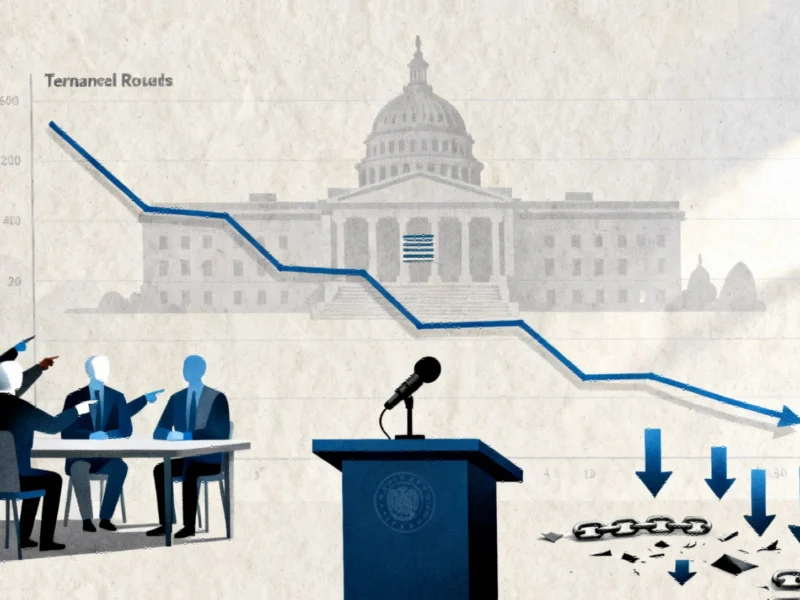Emergency Management in Crisis
State emergency management officials nationwide are sounding alarms about what they term “grant purgatory”—a perfect storm of federal funding delays, policy changes, and government shutdowns that threatens to undermine disaster response capabilities. The situation has created unprecedented uncertainty for agencies responsible for preparing for and responding to natural disasters, pandemics, and security threats.
The Perfect Storm of Challenges
Multiple factors are converging to create what emergency managers describe as the most unstable funding environment in recent memory. The federal government shutdown has furloughed key FEMA contacts, while new requirements and sudden policy shifts have left states scrambling to adapt. “Every day we remain in this grant purgatory reduces the time available to responsibly and effectively spend these critical funds,” said Kiele Amundson, communications director at the Hawaii Emergency Management Agency.
The instability comes at a particularly challenging time, as emergency managers face an expanding range of threats including climate disasters, pandemics, and sophisticated cyberattacks targeting critical infrastructure. These evolving challenges require consistent funding for personnel, training, and equipment—exactly what the current situation threatens to disrupt.
Unprecedented Administrative Hurdles
In late September, FEMA distributed $320 million through the Emergency Management Performance Grant to states, only to freeze the funds the following day pending submission of revised population counts. The new directive required states to exclude people “removed from the State pursuant to the immigration laws of the United States” and provide detailed methodology for their calculations.
Trina Sheets, executive director of the National Emergency Management Association, noted that “It’s certainly not the responsibility of emergency management to certify population.” With no clear guidance, states like Hawaii found themselves scrambling to develop methodologies using 2020 census data and estimates from advocacy groups, unsure whether their approaches would meet federal approval.
Compounding Operational Challenges
The funding instability has forced emergency management agencies to make difficult operational decisions. Washington state’s Emergency Management Division has paused filling some positions “out of an abundance of caution,” according to communications director Karina Shagren. Other agencies report making rushed decisions on important training and equipment purchases.
Compounding the problem, FEMA has reduced the timeframe for spending grant money from three years to one, limiting agencies’ ability to undertake longer-term projects. This comes as the Trump administration has suspended a $3.6 billion disaster resilience program and cut FEMA workforce, creating additional strain on the system.
Political and Legal Battles Intensify
The funding situation has become increasingly politicized, with dramatic cuts to some Democratic-controlled states and unexpected increases for others. New York saw a 79% reduction in Homeland Security Grant Program funding, while Illinois experienced a 69% cut. Meanwhile, territories like the U.S. Virgin Islands received more than double their expected allocations.
Legal challenges have further complicated the landscape. A federal judge in Rhode Island issued a temporary restraining order against the cuts in September, forcing FEMA to rescind award notifications. Another Manhattan judge ordered DHS and FEMA to restore $34 million in transit security grants withheld from New York City due to immigration policies.
These developments highlight what federal grant delays and policy shifts mean for emergency preparedness nationwide. The uncertainty “underscores the political volatility surrounding these awards,” said Frank Pace, administrator of the Hawaii Office of Homeland Security.
Real-World Consequences for Disaster Response
In Hawaii, where the 2023 Lahaina wildfire devastated communities and claimed over 100 lives, the current instability threatens recovery efforts. State and county agencies, along with nonprofits, “face the real possibility” of delays in paying contractors, completing projects, and even staff furloughs or layoffs if the situation continues.
Bryan Koon, president and CEO of consulting firm IEM and former Florida emergency management chief, emphasized that “An interruption in those services could place American lives in jeopardy.” State governments and local agencies need stability and time to adjust to changes, particularly as they face increasingly complex threats requiring sophisticated response capabilities.
States Chart New Course
Faced with persistent uncertainty, states are exploring ways to reduce dependence on federal funding. “Given all of the uncertainties,” said Sheets of NEMA, states are trying to find ways to be “less reliant on federal funding.” This shift represents a fundamental change in the emergency management landscape, potentially accelerating innovation in state and local preparedness strategies.
As emergency managers navigate this challenging environment, they’re closely monitoring industry developments in critical infrastructure and exploring new approaches to resilience. The situation has also prompted increased attention to recent technology that could enhance emergency response capabilities without relying solely on federal support.
Looking Ahead
The cumulative effect of these challenges is prompting a fundamental reassessment of the federal-state partnership in emergency management. What was once a reliable relationship has become increasingly unpredictable, forcing states to develop contingency plans and alternative funding strategies. As the situation evolves, emergency managers nationwide are watching closely, aware that the stability of their operations—and ultimately, public safety—depends on finding sustainable solutions to the current crisis in emergency funding.
This article aggregates information from publicly available sources. All trademarks and copyrights belong to their respective owners.
Note: Featured image is for illustrative purposes only and does not represent any specific product, service, or entity mentioned in this article.



